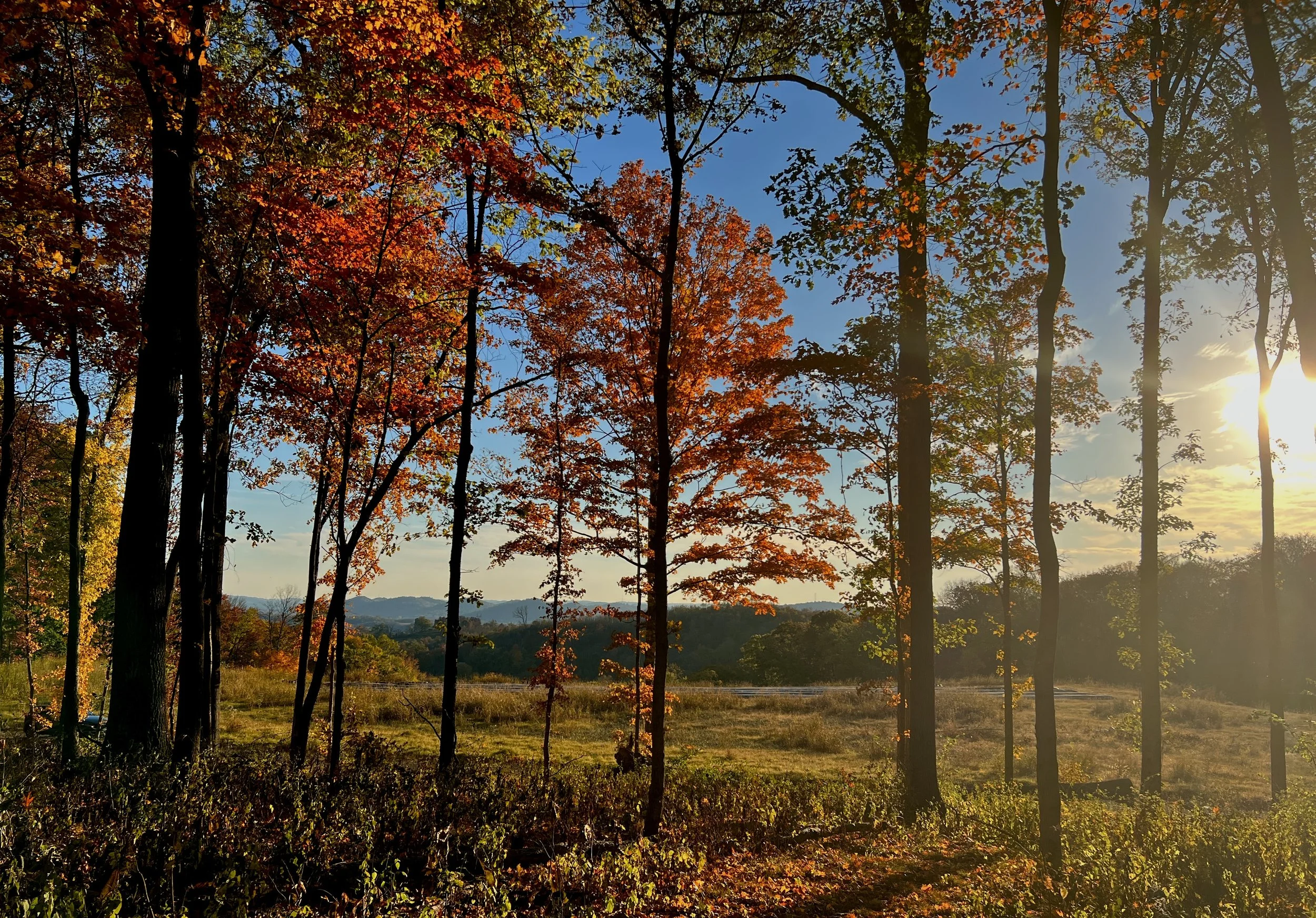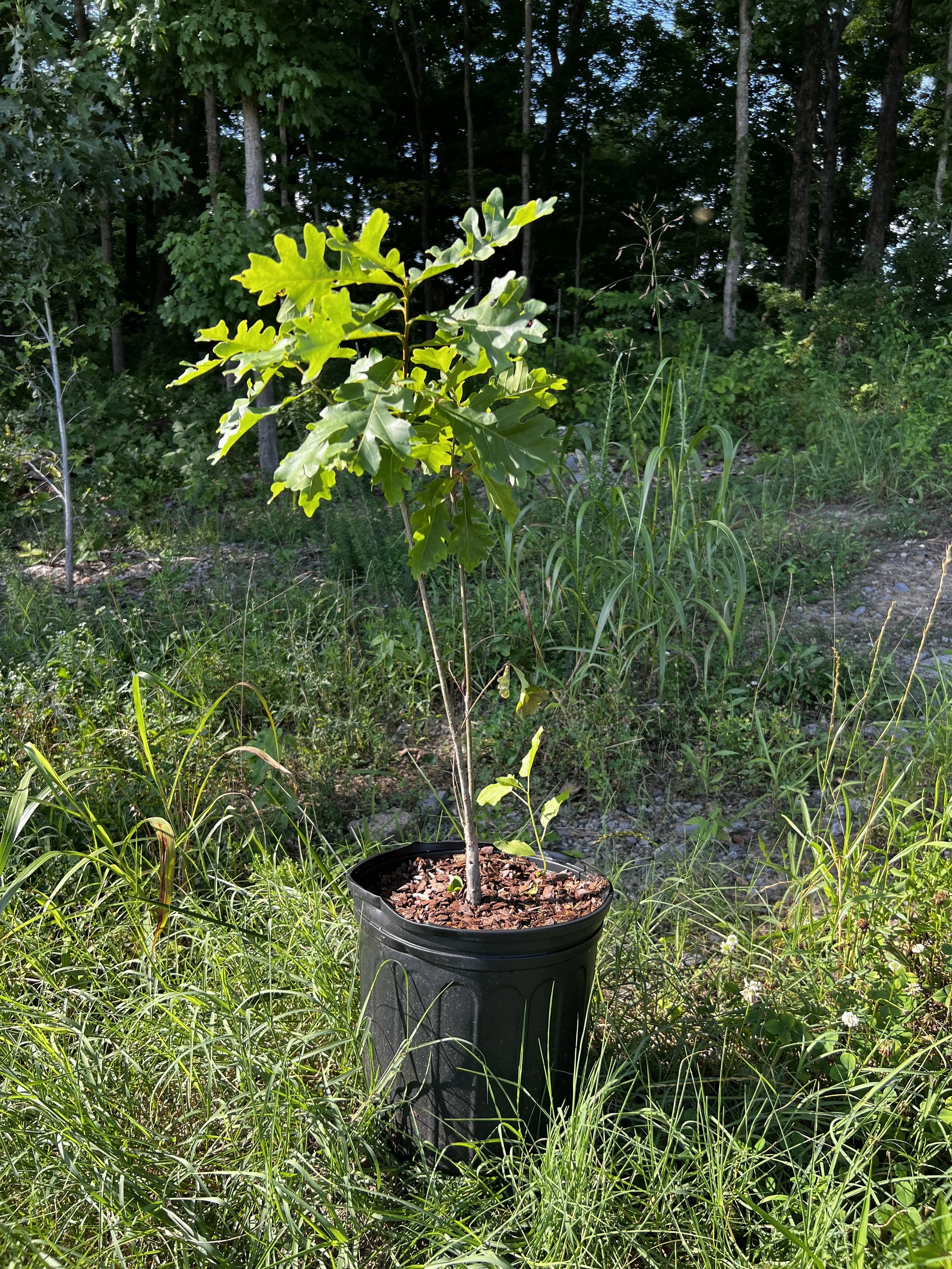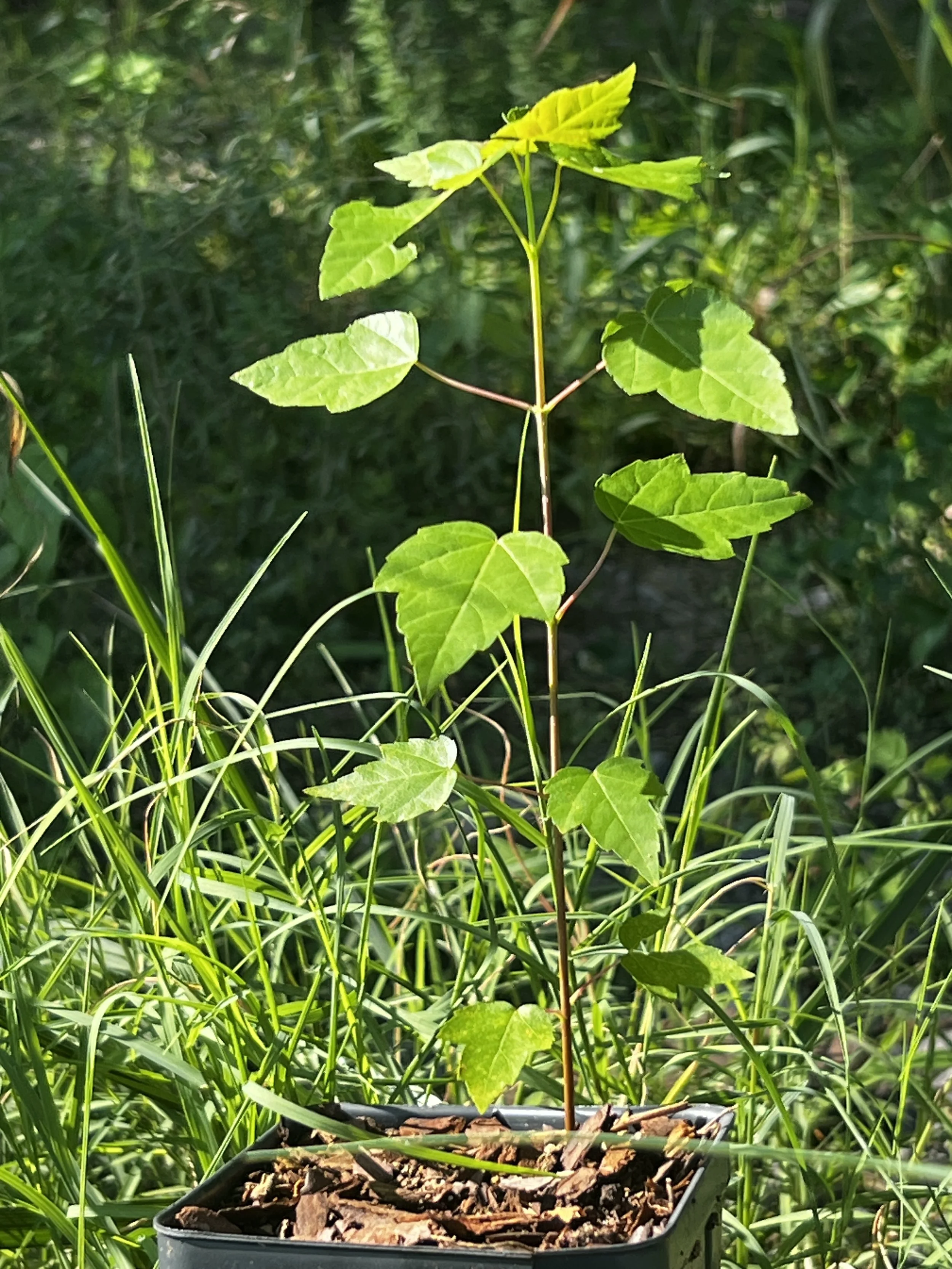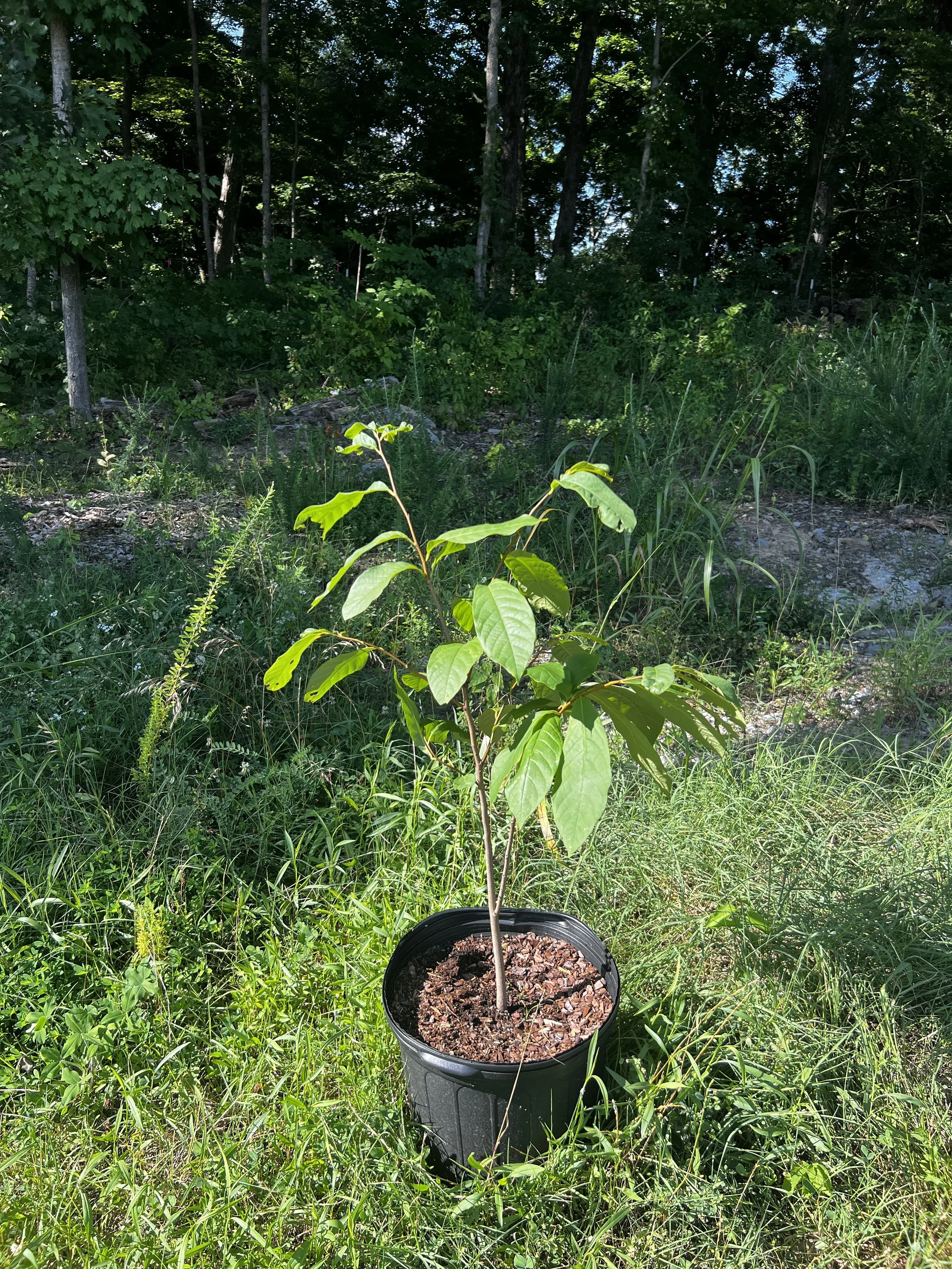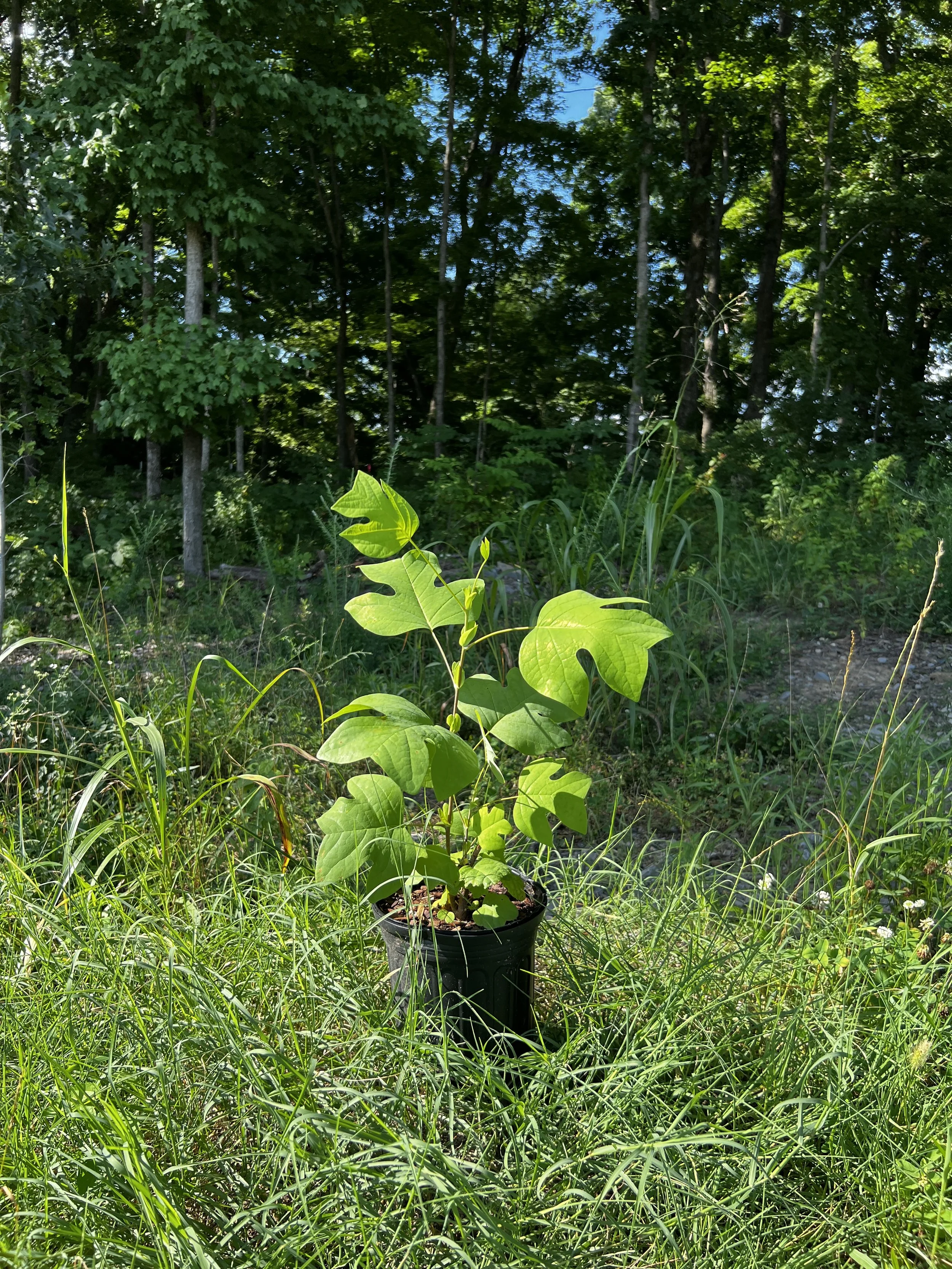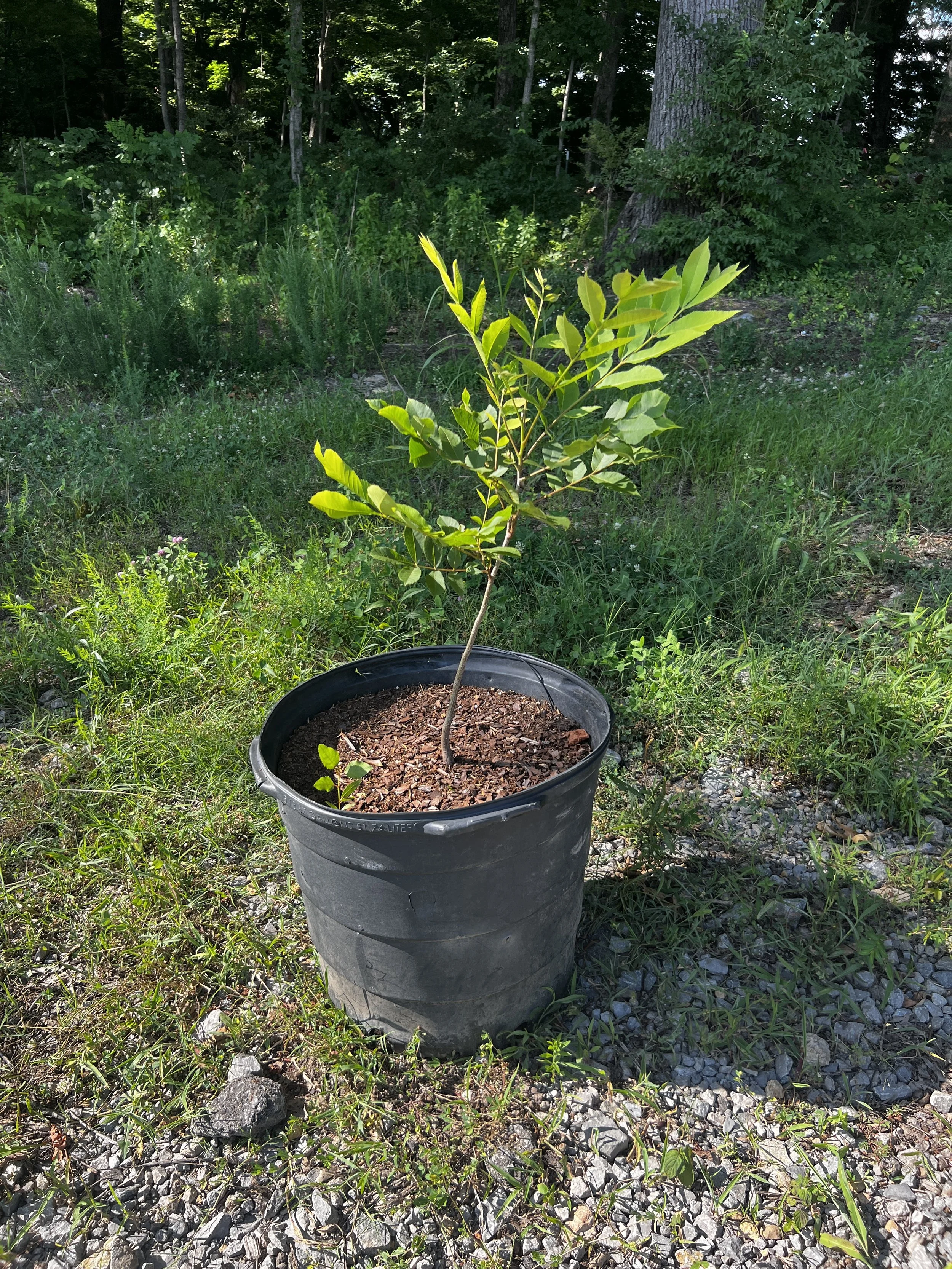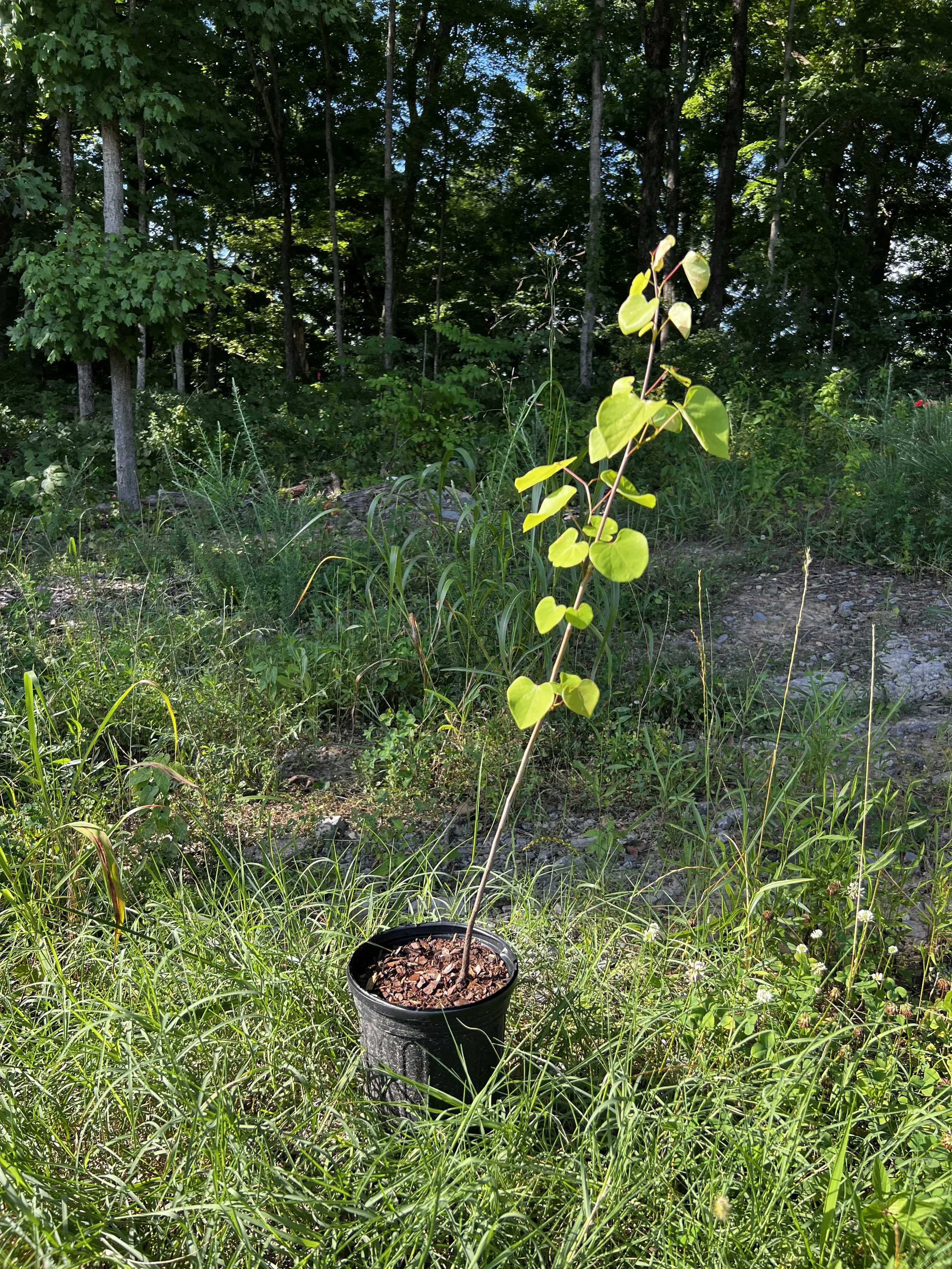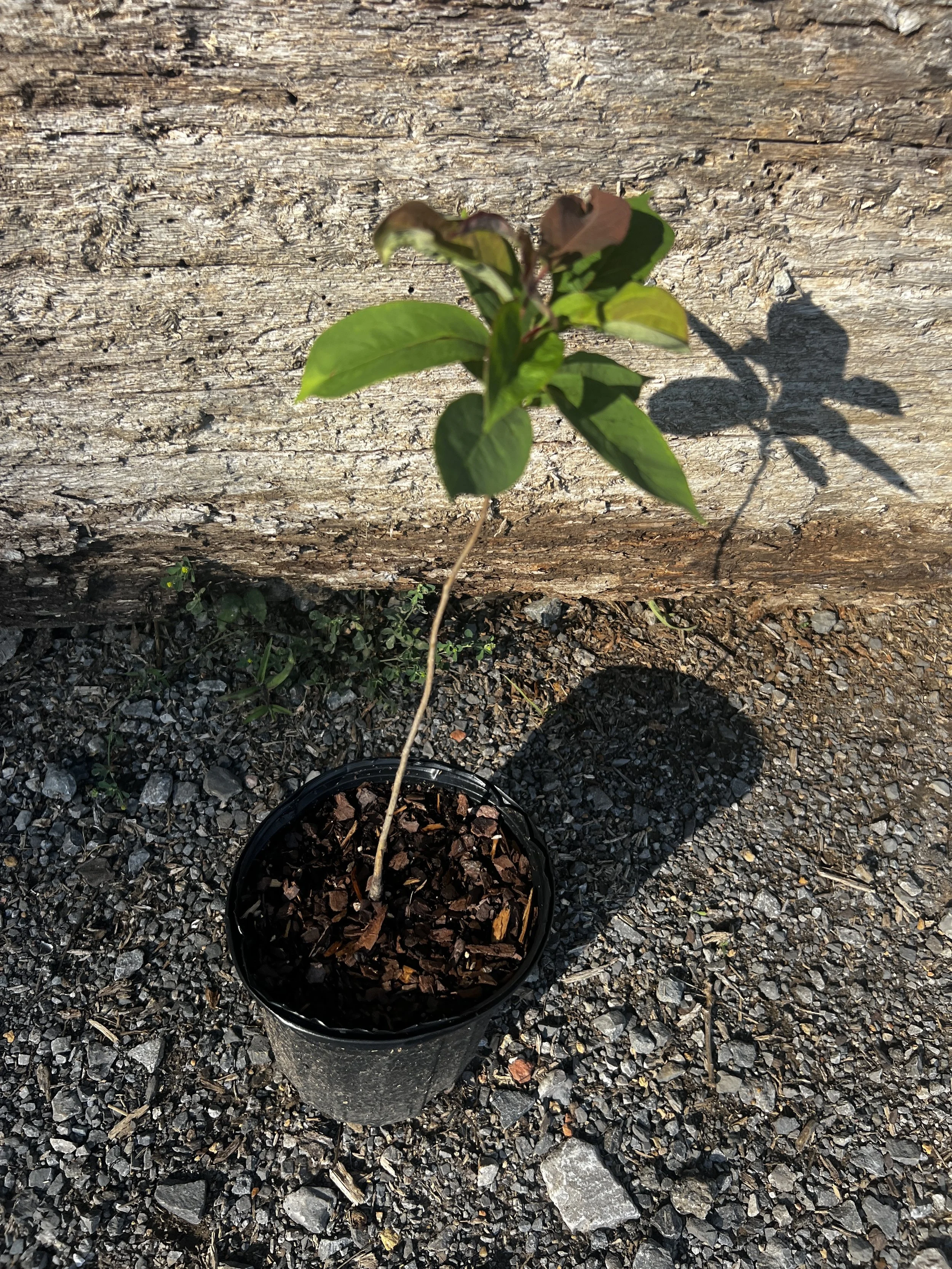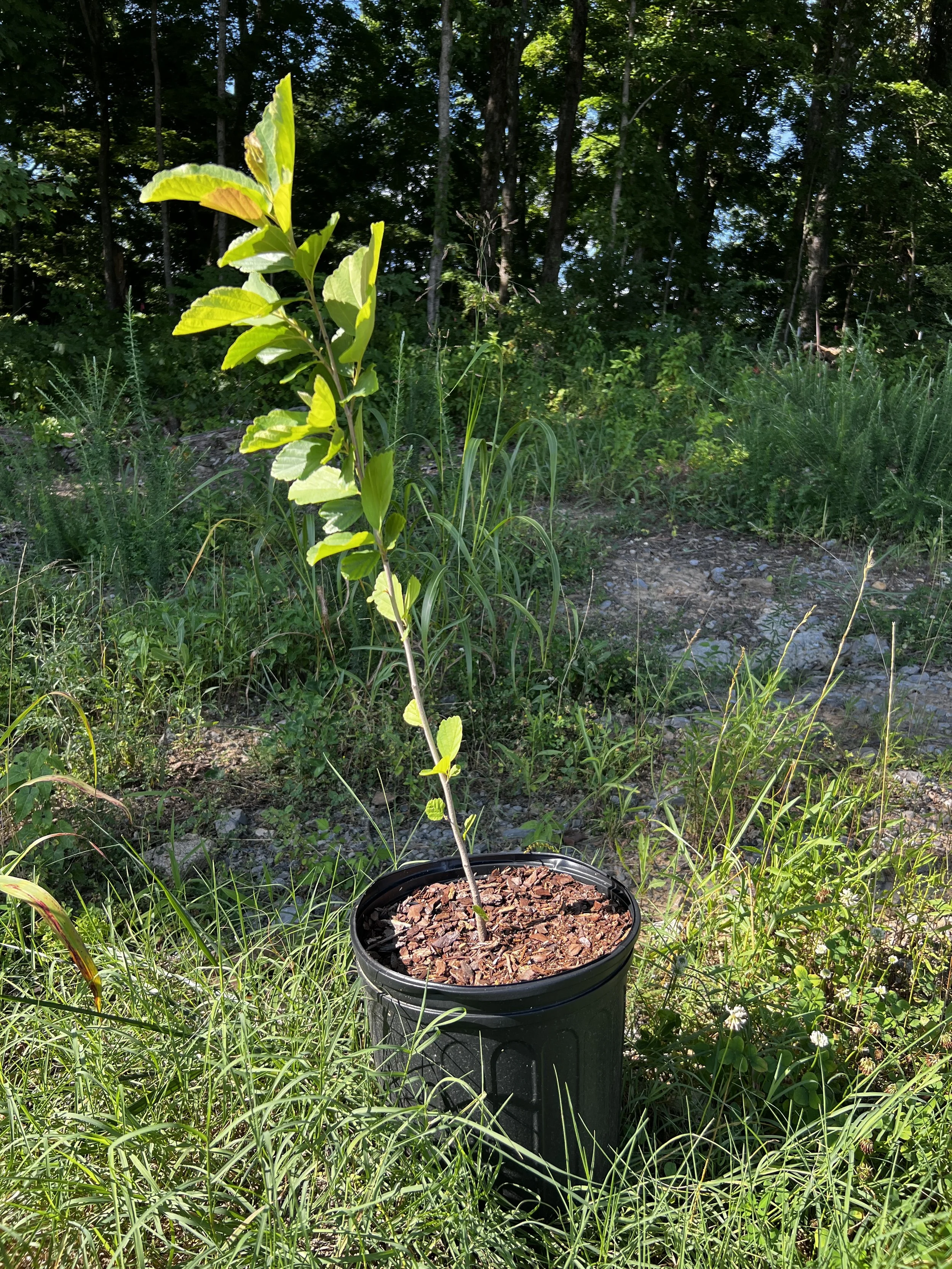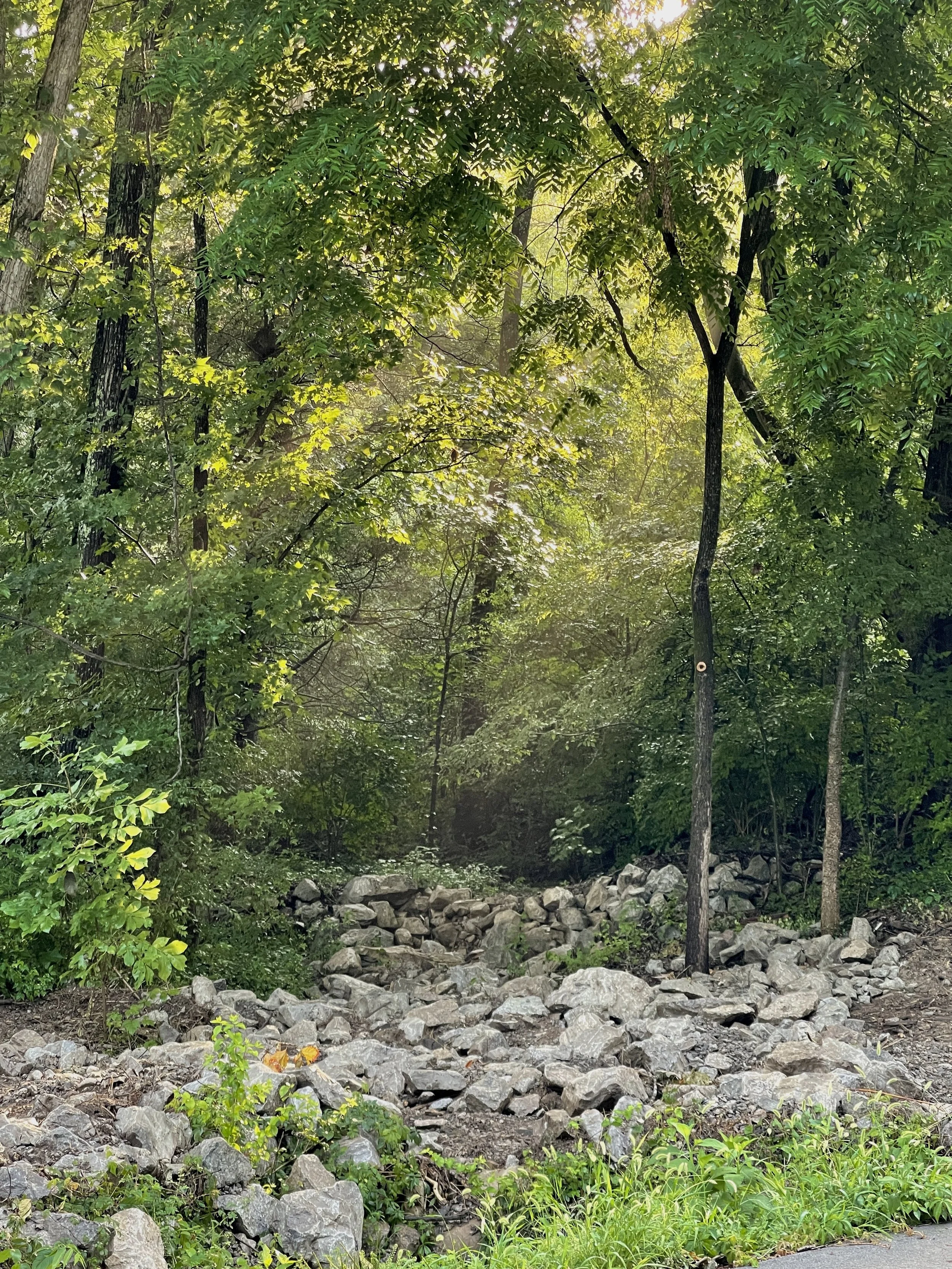
Build a forest sanctuary in your backyard.
The Devil’s Walking Stick
The Devil’s Walking Stick (Aralia spinosa) is a striking native plant found throughout the southeastern U.S., including Tennessee. Despite its fearsome name and thorn-covered trunk, it plays a valuable ecological role. Technically a large shrub or small tree, it grows 10–20 feet tall and is known for its massive, tropical-looking leaves—the largest compound leaves of any North American plant. In midsummer, it produces dramatic clusters of white flowers that attract bees, butterflies, and hummingbirds, followed by dark berries that are a favorite of birds and other wildlife. Its fall foliage turns a brilliant yellow, adding seasonal color to the landscape. This hardy plant thrives in disturbed soils and spreads by root suckers, often forming dense thickets that offer excellent cover for animals. Historically, Native American tribes used parts of the plant for medicinal purposes, though it must be handled with care due to its spines. The Devil’s Walking Stick is a rugged yet beautiful option for naturalized and rewilded landscapes.
Our Devil’s Walking Stick trees start at just $25. For more information email: karl@aureafarms.com
The video above is of a Devil’s Walking Stick at Aurea Farms. We grow and sell these unique native trees to improve the landscape across Middle Tennessee.
The Trees of Aurea Farms
Ash, Green, Fraxinus pennsylvanica (Under threat from the Emerald Ash Bore)
Beech, American, Fagus grandifolia
Cedar, Eastern Red, Juniperus virginiana
Cherry, Black, Prunus serotina
Crabapple, Robinson, Malus 'Robinson'
Cyprus, Bald, Taxodium distichum
Devils Walking Stick, Aralia spinosa
Dogwood, Kousa, Cornus kousa
Dogwood, Native, Cornus florida
Gum, Black, Nyssa sylvatica
Gum, Sweet, Liquidambar styraciflua
Hackberry, Southern, Sugarberry, Celtis laevigata
Hickory, Carya spp. (e.g. C. tomentosa, C. glabra)
Hickory, Shagbark, Carya ovata
Locust, Black, Robinia pseudoacacia
Locust, Honey, Gleditsia triacanthos
Magnolia, Southern, Magnolia grandiflora
Magnolia, Sweet Bay, Magnolia virginiana
Maple, Boxelder, Acer negundo
Maple, Red, Acer rubrum
Maple, Silver, Acer saccharinum
Maple, Sugar, Acer saccharum
Mimosa, Albizia julibrissin
Oak, Red, Black, Quercus velutina
Oak, Red, Nuttall, Quercus texana
Oak, Red, Northern, Quercus rubra
Oak, Red, Scarlet, Quercus coccinea
Oak, Red, Shumard, Quercus shumardii
Oak, Red, Southern, Quercus falcata
Oak, Red, Willow, Quercus phellos
Oak, White, Quercus alba
Oak, White, Burr, Quercus macrocarpa
Oak, White, Chinkapin, Quercus muehlenbergii
Oak, White, Overcup, Quercus lyrata
Oak, White, Swamp, Quercus bicolor
Pawpaw, Asimina triloba
Pecan, Carya illinoinensis
Persimmon, American, Diospyros virginiana
Pine, White, Pinus strobus
Pine, Yellow, Southern, Loblolly, Pinus taeda
Poplar, Yellow, Tulip Tree, Liriodendron tulipifera
Redbud, Eastern, Cercis canadensis
Sassafras, American, Sassafras albidum (Under threat from Laurel Wilt)
Serviceberry, Amelanchier arborea
Sycamore, Platanus occidentalis
Walnut, Black, Juglans nigra
_____________________________________________________________________________________________________________________________________________________
Future trees include the American Basswood (Sliver Linden), Hemlock, Osage orange and several more… Stay Tuned.
*Duncan, W. H., & Duncan, M. B. (2000). Trees of the southeastern United States (Wormsloe Foundation Publications). University of Georgia Press.
